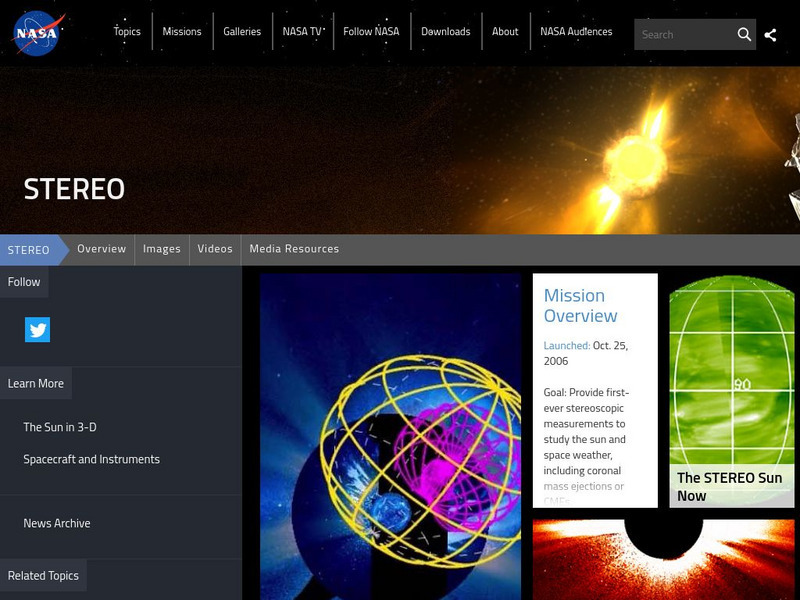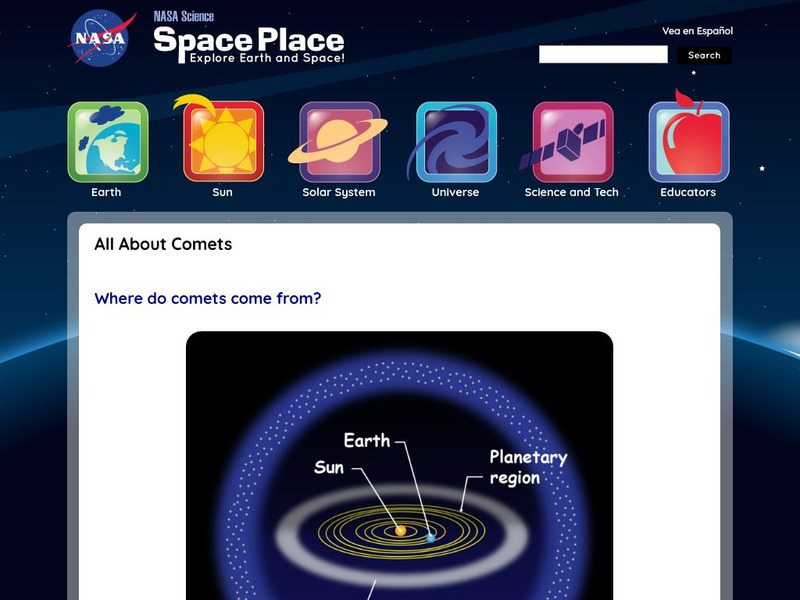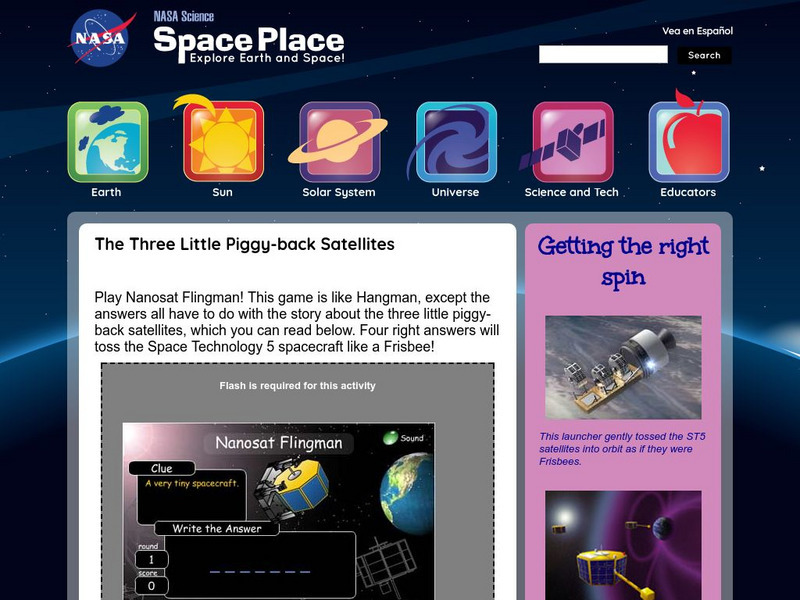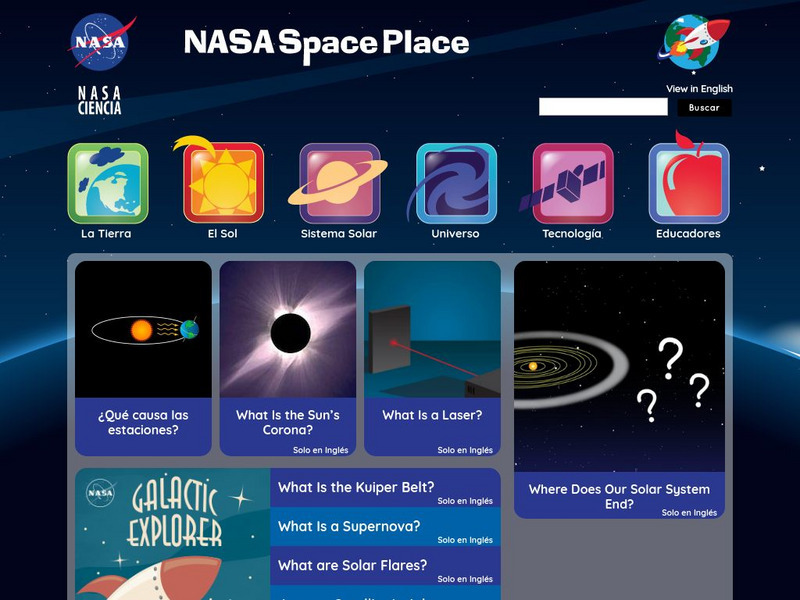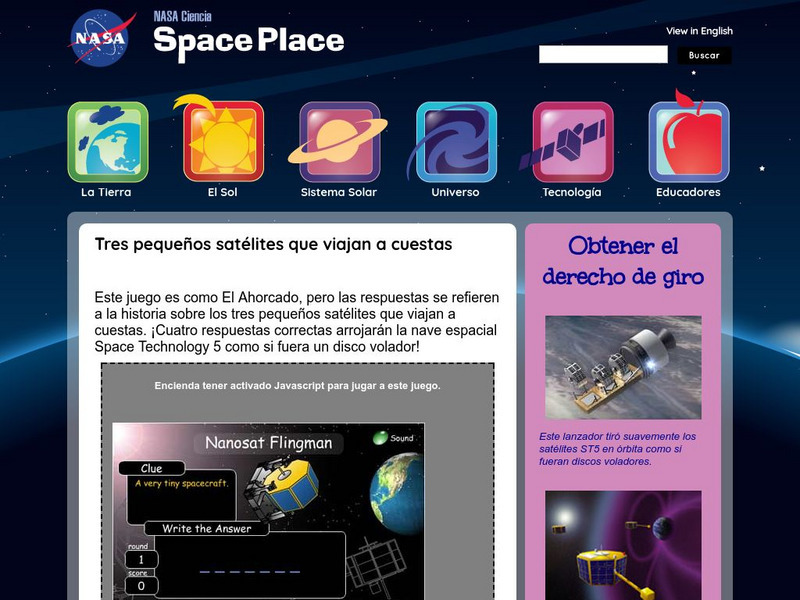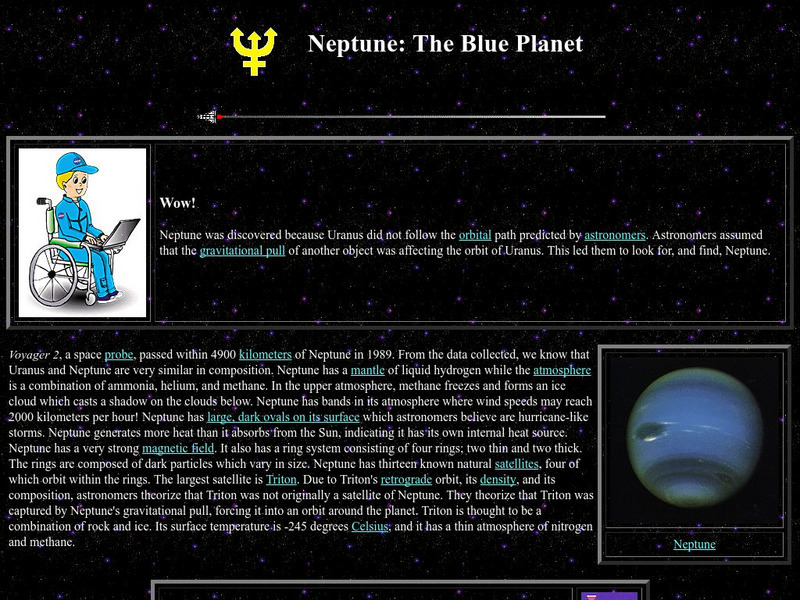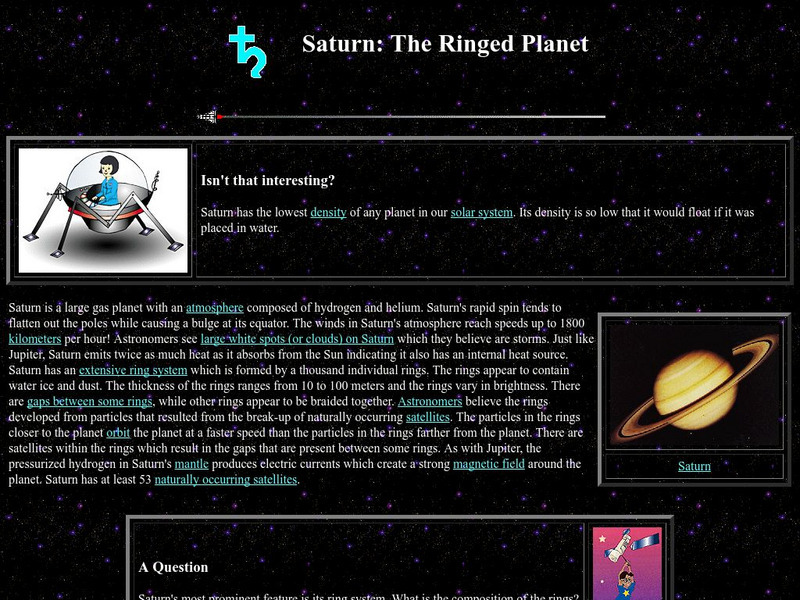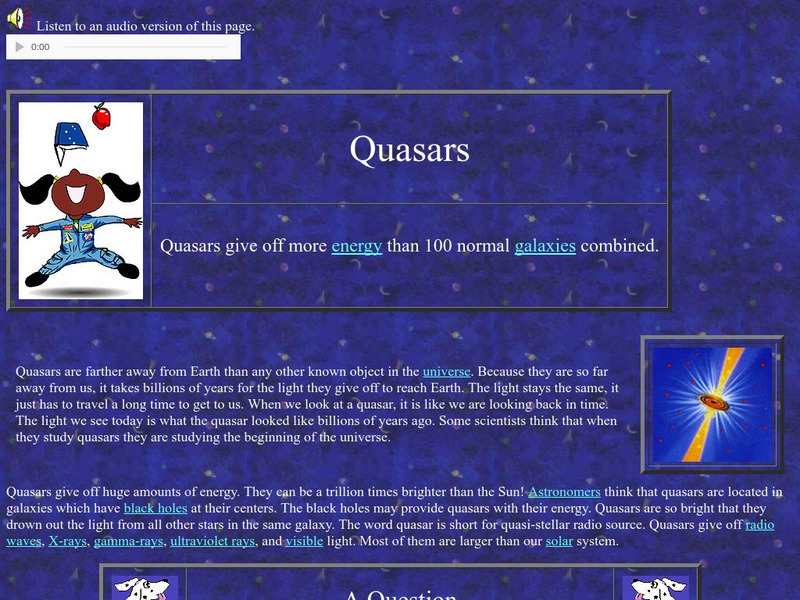NASA
Nasa: The Solar Terrestrial Relations Observatory
The Solar Terrestrial Relations Observatory works to help scientists predict and better understand solar storms caused by coronal mass ejections. These powerful storms can disrupt phone signals, GPS, and services that rely on satelites....
NASA
Nasa: Space Place: Solar System Switch a Roo
Play this creative puzzle game where the player views a solar system object that is all mixed-up. Try and find the matching parts of the photograph, and learn about the solar system in the process.
NASA
Nasa: Space Place: Unscramble the Clouds
In this slider picture puzzle, try and put the pieces in the correct place to see all types of different clouds.
NASA
Nasa: Space Place: All About Comets
Learn about comets: Where do comets come from? What brings comets near Earth? What makes comets look fuzzy? What do comets look like up close? What's inside a comet? Why do comets have tails?
NASA
Nasa: The Space Place: The Three Little Piggy Back Satellites
This site from the National Aeronautics and Space Administration allows one to read the "Three Little Piggy-back Satellites," and then play the Nanosat Flingman game. [Requires Shockwave]
NASA
Nasa: The Space Place: Match Light Faces With Heat Faces
This site from the National Aeronautics and Space Administration provides information on the subject. "An infrared camera sees heat, rather than light. Can you match up the face in the infrared image with the same face in visible light?"
NASA
Nasa: Shuttle Carrier Aircraft
Image of the Shuttle Carrier Aircraft (SCA) as seen at Kennedy Space Center in Florida in April, 2012. The aircraft was assigned to shuttle Discovery.
NASA
Nasa: Space Place
In this site you can explore, do and play games related to space, solar system, our planet and people and technology.
NASA
Nasa: Tres Pequenos Satelites Que Viajan a Cuestas
A challenging and creative hangman activity where students read a short article about satellites and then proceed to play "Nanosat Flingman." A great learning activity for for reading comprehension, vocabulary, and pronunciation....
NASA
Nasa Star Child: Galaxies
This resource has two levels: one for younger viewers and one for older viewers. It surveys the basic galaxy types and provides details.
NASA
Nasa Star Child: Mars, the Red Planet (Level 2)
A general introduction to Mars. Includes a glossary of terms and two images of Mars. Many interspersed links to more graphics and more detailed information about the planet Mars. Also includes a printable version and links to other...
NASA
Nasa Star Child: Olympus Mons
General information about the biggest mountain in the solar system, Olympus Mons. Includes one image. Vocabulary words are linked to a glossary of terms.
NASA
Nasa Star Child: The Blue Planet (Level 2)
A good general introduction to planet Neptune for students. Has many links to more detailed information about the planet throughout the page, as well as special links for interesting facts. Also features a printable version of the page.
NASA
Nasa Star Child: Nicolaus Copernicus (Level 1)
Part of a NASA site for younger children, this site contains a short biography of Copernicus with hyperlinks to terms. Printable version available.
NASA
Nasa Star Child: Saturn, the Ringed Planet (Level 2)
An introductory site with information about planet Saturn, with a good glossary, a brief quiz, and links for more information. Printable version also available.
NASA
Nasa Star Child: Neil Armstrong
This is the official NASA site that details Neil Armstrong's life and accomplishments. Includes movies about his first steps on the Moon.
NASA
Nasa Star Child: What Are the Phases of the Moon?
This page provides basic information about the causes of the phases of the Moon. A good diagram shows the lit portion of the Moon as seen from Earth through one complete Lunar cycle.
NASA
Nasa Star Child: Stars
This page details the life cycle of a star, and includes information on medium-sized and massive stars, plus a glossary and a question.
NASA
Nasa Star Child: Space Travel (Level 1)
Learn about the history of space travel. Audio content is included as well as vocabulary words linked to a glossary of terms.
NASA
Nasa Star Child: The Asteroid Belt (Level 1)
Learn about asteroids in our solar system. Discusses where you will find the asteroid belt and what it is. Vocabulary words linked to a glossary of terms and a printable version are available.
NASA
Nasa Star Child: Quasars (Level 1)
Learn why quasars are the brightest things in the universe. Vocabulary words linked to a glossary of terms and a printable version are available.
NASA
Nasa Star Child: Comets (Level 1)
Younger students learn why comets race through the sky as well as related vocabulary words and meanings.
NASA
Nasa Star Child: Jupiter the Largest Planet
Here at this site from NASA you can learn about the planet Jupiter! Read, or listen to, what makes Jupiter so special in our solar system.
NASA
Nasa Star Child: The Sun
Get to know our nearest star with this introduction to the sun. Listen to the information in an audio file. Vocabulary words are linked to a glossary of terms. Features include links to other interesting facts and a printable version of...


